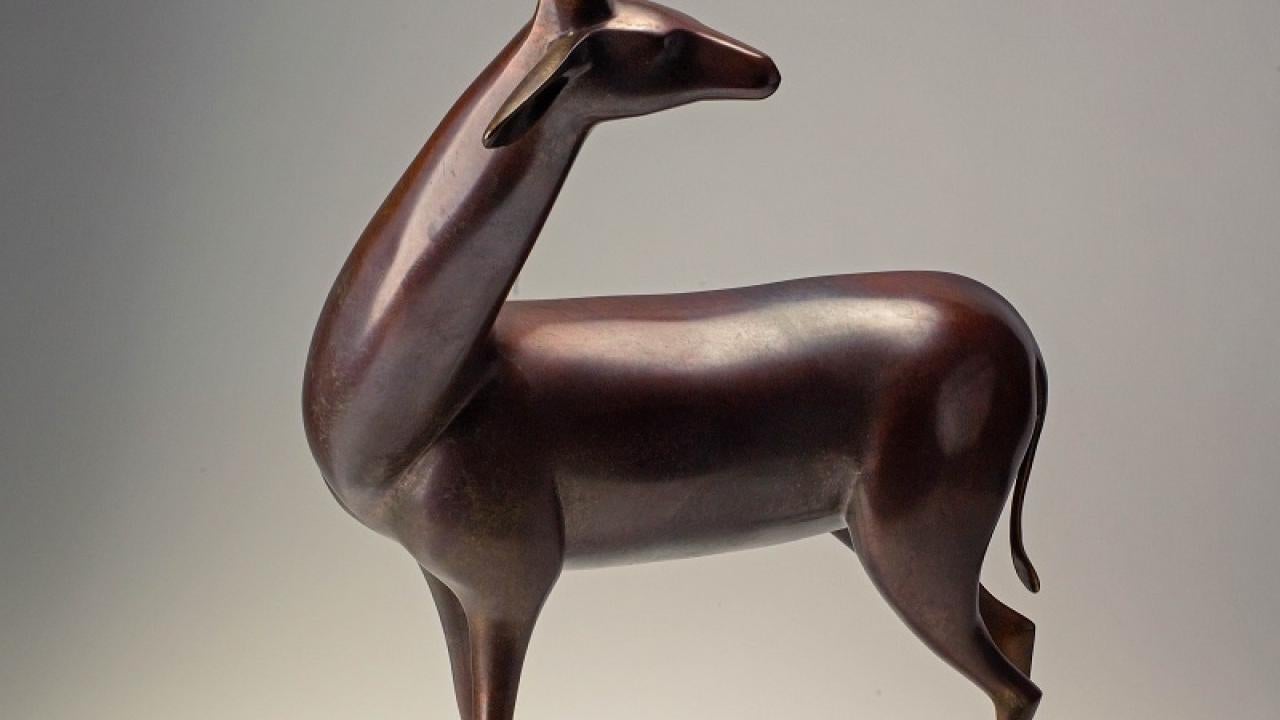Modern Menagerie at the Crocker has a zoo connection; through March 31
The Crocker Art Museum is featuring part of its permanent collection right now in Modern Menagerie an exhibition of sculptures by Loet Vanderveen, a California artist originally from the Netherlands. Vanderveen became internationally recognized for his remarkable ability to capture animals' subtle expressions and gestures with minimal detail. The exhibition primarily features works from the Crocker's permanent collection.
As Sacramento thinks about what to do with its zoo, this exhibition seems timely, in an artistic sense. Vanderveen was very involved with his local zoo, and it served as a lifelong inspiration for his art.
Featured are 33 bronze, marble, and ceramic sculptures, most of which feature animals grazing, moving in herds, and stalking their prey. The exhibition also features several examples of the artist's early ceramic works, including two vessels. It runs through March 31.
"We are delighted to show his works together in this exhibition, and present the community with this opportunity to appreciate his minimalist aesthetic, as well as connect with his personal narrative and his lifelong fascination with the animal kingdom," said the Museum's Director and CEO, Lial Jones.
Vanderveen was born in Rotterdam, The Netherlands. As a boy, he frequently visited the zoo located near his home, and the zoo staff came to know him by name and by face. Recognizing his growing fondness for animals, the staff allowed Vanderveen to assist in caring for primates and to help raise a lion cub. Vanderveen's was heartbroken when the lion grew large enough to be placed in a cage. His growing bond with the animals led to dreams of traveling abroad — especially to Africa — to see the creatures in their natural habitats.
The German invasion of Rotterdam during World War II brought an abrupt end to Vanderveen’s zoo visits. He was devastated when, in preparation for an air raid in 1940, the Dutch army killed many of the zoo's animals in an attempt to minimize further chaos.
“I got there right after the bombardment, and the whole place was in ruins,” Vanderveen later recalled in an article published by The Artifacts Gallery. "The lions and big cats — many of them were shot. But in the midst of it all, there was one elephant roaming. It was very, very poetic.”
With the German occupation of Rotterdam, Vanderveen, of Jewish descent, came to witness and experience human suffering. He escaped the Nazi-occupied territory and was briefly held captive in France.
Eventually, In 1959, Vanderveen settled along the coast of Big Sur, California. His home and studio offered respite from the city and gave him the opportunity to focus on his ceramics. He soon transitioned from vessels to humorous human figures that captured the nuances of human interaction — qualities that he adapted as he began to explore animal figures, which would become the primary subject of his work.
See more on this exhibition here.
Related stories
- Arts Blog Post: "UC Davis Professor Walks Path From Zoo Muralist To Scientist"
- Sac Bee Op-Ed, By Dean Michael Lairmore: "Expanding Sacramento Zoo Would Help Save Endangered Animals Worldwide"
More museum events related to the holidays can be found here.
Events holiday and not can be found in the Capitol Culture List
Listen to the podcast
